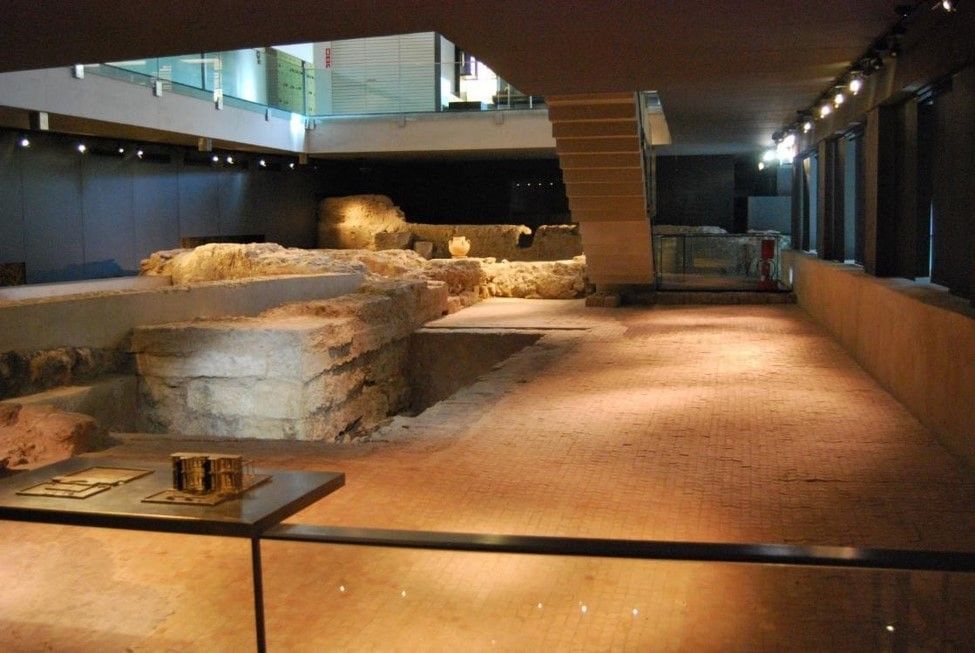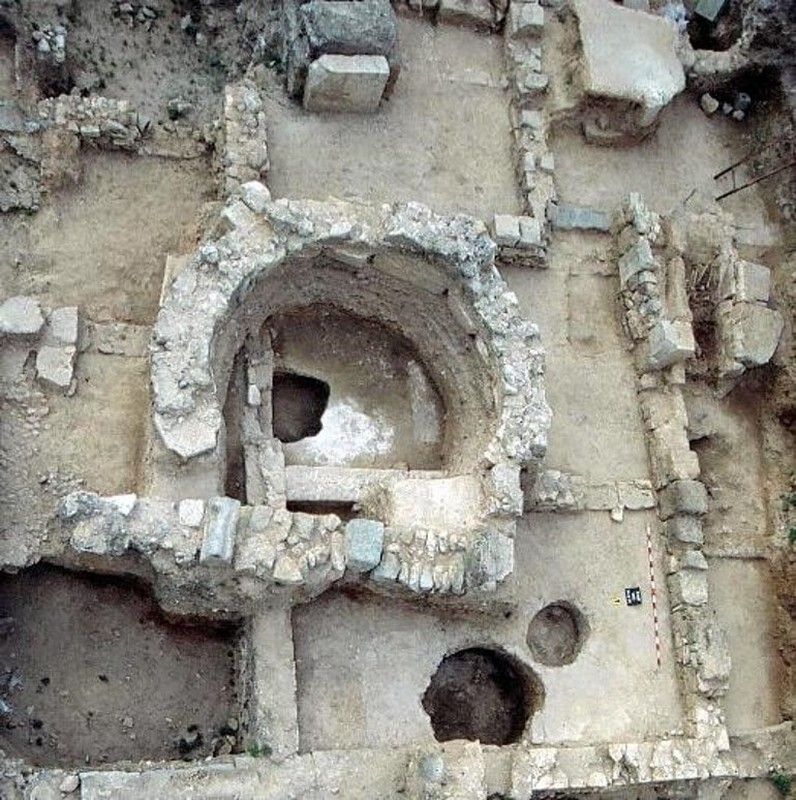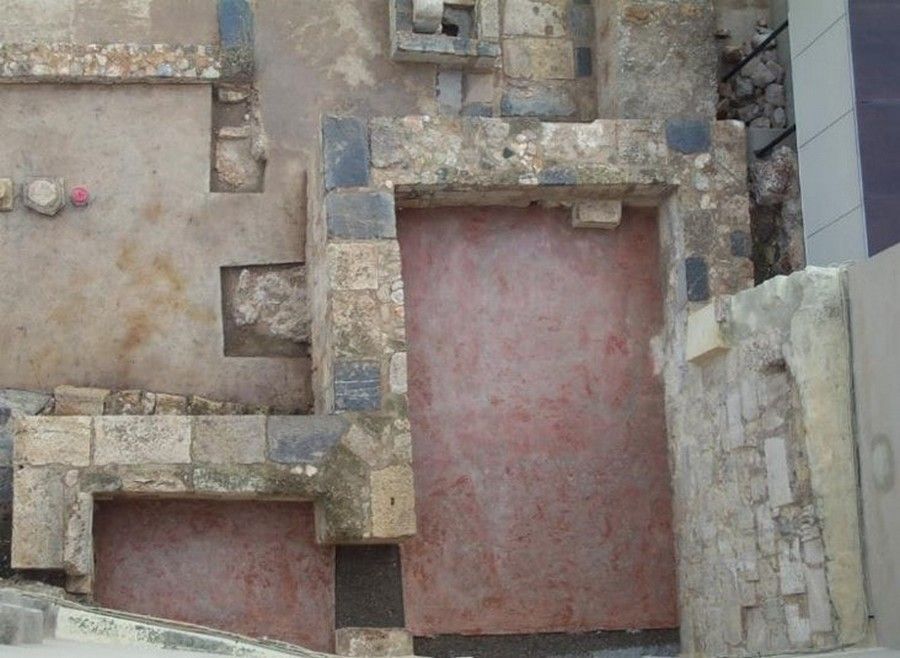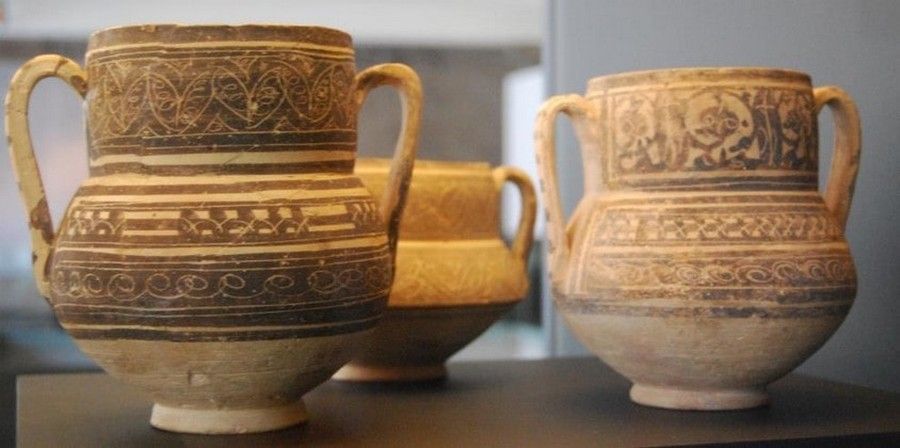CENTRO ARQUEOLOGICO DE L’ALMOINA

Historic environment
Of the places of archaeological interest in Valencia, the area of the Plaza de l’Almoina is the most outstanding, both for its richness and for its state of conservation. Achieving its preservation has been a long road that has ended in a modern conditioned center for citizens and visitors. It is located in the heart of the historic city and is an exceptional platform for exploring monumental Valencia.

Its characteristics are diachrony, overlap and complexity. There is a lot of history and architecture in a small space. In l’Almoina there are buildings from different periods and functions related to historical, archaeological, urban or religious issues.
The claim of the Archaeological Center of l’Almoina has not been to explain only the excavation of l’Almoina. Its function is to explain the evolution of the city itself from its oldest phases. It is a Museum of Urban History of a site, Valencia.
To reach the current situation, in which, since 2007, the “Centre Arqueològic de l’Almoina” has been opened to the public, many years have passed since that distant 1985 when the Valencia City Council took the initiative to act in this emblematic space of the city. Since then, thirteen archaeological excavation campaigns have been carried out and a multitude of scientific studies have been carried out on the findings in specialized publications and congresses, which have been essential to ensure their exact identification and understand their operation, a necessary phase prior to their proper public exposure[.
It has been a long and arduous path that, happily, has ended in a modern conditioned center for citizens and visitors, located in the heart of the historic city.
Description
 The Archaeological Center of l’Almoina is located in a privileged topographical situation, in the heart of from the city: next to the cathedral and the basilica of Nuestra Señora de los Desamparados. Its name comes from the medieval institution of l’Almoina, dependent on the cathedral chapter, which occupied part of the same space. It was where the poor were cared for and fed. Over time, the building was adapted to other functions, as a prison for those protected by ecclesiastical immunity until the end of the 18th century. Once said immunity was suppressed, it became a warehouse. Remains of a pointed arch of this construction were visible until a few decades ago on the site. The excavation has brought to light the plan of this building, made up of a single nave that ran along the site in a north-south direction and in which various buttresses and supports for the missing arches alternated. It stretched from one end of the block to the other, so that its façade faced the Plaza de l’Almoina, to which it gave its name, and the rear, Almudín street. Some plans from 1830 are even known. In 1875 a part of the building was sold and demolished to build houses.
The Archaeological Center of l’Almoina is located in a privileged topographical situation, in the heart of from the city: next to the cathedral and the basilica of Nuestra Señora de los Desamparados. Its name comes from the medieval institution of l’Almoina, dependent on the cathedral chapter, which occupied part of the same space. It was where the poor were cared for and fed. Over time, the building was adapted to other functions, as a prison for those protected by ecclesiastical immunity until the end of the 18th century. Once said immunity was suppressed, it became a warehouse. Remains of a pointed arch of this construction were visible until a few decades ago on the site. The excavation has brought to light the plan of this building, made up of a single nave that ran along the site in a north-south direction and in which various buttresses and supports for the missing arches alternated. It stretched from one end of the block to the other, so that its façade faced the Plaza de l’Almoina, to which it gave its name, and the rear, Almudín street. Some plans from 1830 are even known. In 1875 a part of the building was sold and demolished to build houses.
Although both the institution and the building that housed it have disappeared, their memory has remained in street place names, still giving its name to the square that separates the cathedral from the Archaeological Center.
The formation of such a large building, almost square in shape, 50 x 51 meters, with an area of 2,500 m2, was due to the ancestral intention of building a large religious building for Catholic worship, which would serve as a grand extension, towards the Eastern side, of the Basilica of Our Lady of the Forsaken. After a public contest, in 1930 the project presented by the architect V. Traver was approved, which proposed the erection of a large building with a huge dome that stood out majestically from its surroundings.
Once, in the post-war period, the plots had already been purchased and demolition carried out on the entire block that the site occupies, this ambitious project was abandoned due to the lack of means to carry out a work of such large proportions. This failed urban initiative was what caused the existence of this large empty space.
During the years prior to the beginning of the municipal archaeological intervention (1985), the place had become an unseemly site, practically abandoned in the monumental center of Valencia, next to the cathedral itself. The need to adopt an urban solution led, in 1985, the Valencia City Council to agree with the Archconfraternity of the Desamparados, the manager of the space, to convert this place into a private garden, called the “Liturgical Garden”, and a period of time was set. 10 months to carry out archaeological excavations. The numerous monumental discoveries that immediately took place raised, first, the need to continue the excavations and, over time, advised to modify the urban solution to allow the conservation and exhibition of the archaeological remains.
The precedents of previous archaeological findings in the surroundings of the site of l’Almoina have been numerous. To the west, already during the construction works of the current Basilica de los Desamparados, in the middle of the s. XVII, numerous remains appeared, which were very well published, for the customs of the time, by J.V. del Olmo, who was secretary of the Holy Office of the Inquisition. Several Roman inscriptions stand out, which can still be seen, more or less deteriorated, embedded in the western façade of the building.
To the south, in the building known as the “Punt de Ganxo”, built in 1904, during the works, in addition to demolishing a circular tower (of the baptistery?), interesting architectural pieces and an incomplete inscription from the Visigothic period were found.

In the surroundings of the building, during the decade of 1920-1930, the installation of the new sewage network was supervised, thanks to which several walls were detected and Visigothic tombs and some Roman inscriptions were found, such as a statue pedestal dedicated to the Emperor Aurelianus.
Between 1985 and 2005, the Valencia City Council carried out 13 large archaeological excavation campaigns, which revealed the extraordinary importance and good state of conservation of the discovered buildings, which constitute the best material sample of the various cultures that have settled in Valencia. , from its foundation by the Romans in 138 BC, to the Muslim era, passing through the early Christian times and the Visigothic era.
The extraordinary archaeological wealth of l’Almoina has generated a copious scientific and informative bibliography and can be summarized very schematically with a series of basic data
- 13 long multi-month campaigns (1985-2005).
- 2,500 m2 of excavated surface: 50 x 51 meters.
- 5 meters deep.
- 2,150 years of history: 23 centuries.
The numerous remains can be grouped into five major historical-archaeological periods corresponding to five superimposed cities:
- Republican Roman: 138-75 B.C.
- Imperial Roman: 1st to 5th centuries AD
- Visigothic: VI to VIII centuries.
- Islamic: 10th to 13th centuries.
- medieval: 13th to 15th centuries.
In total, more or less 30 buildings have been exhumed and identified, which, ordered by major periods, would be:
- Republican Roman period: baths (thermas), warehouses (horreum), sanctuary of Asclepios, forum, tabernae, Via Herculea and main streets (maximum decumano), foundation offerings.
- Roman imperial period: portico of the forum, basilica, curia, seat of the collegium, ceramic kiln, fountains, main streets (cardo and decumano maximo), reform and extension of the sanctuary of Asclepios, < i>Aedes Augusti[,…
- Visigothic period: baptistery, martyrdom building with horseshoe apse, waterwheel, polygonal building, 3 superimposed and scattered necropolises,…
- Islamic period: souk, aqueduct, palace (Alcázar), houses, royal cemeteries (rawda), waterwheel, pool, interior fortification,…
- Medieval period: l’Almoina building, houses,…
 The “Centre Arqueològic de l’Almoina”, thanks to its original content, the various ancient buildings that make it up , more than an archaeological museum, it is a privileged space for the interpretation of the urban history of Valencia. In addition to a valuable set of archaeological ruins, there are also extraordinary findings of historical episodes with a high emblematic value for the city, such as the identification of the place of the martyrdom of San Vicente and the discovery of some of the victims of the destruction of Valencia. in 75 B.C. At a more symbolic level, but always based on a rich material base, there is various evidence of the founding of the city and what were the beginnings of Christianity.
The “Centre Arqueològic de l’Almoina”, thanks to its original content, the various ancient buildings that make it up , more than an archaeological museum, it is a privileged space for the interpretation of the urban history of Valencia. In addition to a valuable set of archaeological ruins, there are also extraordinary findings of historical episodes with a high emblematic value for the city, such as the identification of the place of the martyrdom of San Vicente and the discovery of some of the victims of the destruction of Valencia. in 75 B.C. At a more symbolic level, but always based on a rich material base, there is various evidence of the founding of the city and what were the beginnings of Christianity.
The archaeological excavations of l’Almoina form a wide, diverse, rich and, therefore, complicated space characterized by:
- Abundance of buildings, some exceptional or unique, others more common at a general level, but always of interest in the regional or local context.
- Continuous overlapping and reuse of urban elements, normally of solid construction, which, when used during various periods, remained in good condition.
- Various state of preservation, from very well preserved elevations and pavements, in some cases, to buildings that only maintain part of their foundations. Its general plan is usually well known.
- Not only are there buildings, but evidence of other types of findings have been identified, as evident and extraordinary as they are of high symbolic value and especially valuable and essential to know and understand the history of Valencia. They would be the spectacular cases of the founding rites of the city, the place of the martyrdom of San Vicente Mártir or the authentic and macabre real scene of the destruction of Valencia in 75 BC.
- Very rich movable material culture: epigraphy, ceramics, glass, weapons, coins, mural painting, sculpture,….
Albert Ribera for URBS REGIA
Other interesting information
Visiting hours and conditions
From Tuesday to Saturday, from 10 a.m. to 2 p.m. and from 3 to 7 p.m.
Sunday, from 10 a.m. to 2 p.m.
Entrance fee: €2
Bibliography
Alapont, L. y Ribera, A. (2008): “Topografía y jerarquía funeraria en la Valencia tardo-antigua”. Morir en el Mediterráneo Medieval. BAR International Series 2001. Oxford: 59-88.
Escrivà, I., Ribera, A. y Vioque, J. (2010): Guía del Centro Arqueológico de l’Almoina. Ajuntament de Valencia. Valencia.
RIBERA, A. (2008), “La primera topografia cristiana de Valencia (Hispania Carthaginiensis)”, Rivista di Archeologia Cristiana LXIII, Città del Vaticano, 377-434.
Ribera, A. (2010): “El centro Arqueológico de l’Almoina. Valencia” 5. Encuentro internacional. Actualidad en Museografía (Palencia 2009): 67-82.
Ribera, A. (2012): “Centro Arqueológico de la Almoina en Valencia”. En A. Ancona, A. Contino, R. Sebastiani (eds.). Archeologia e Città. Riflessione sulla valorizazione dei siti archeologici in aree urbane. Roma: 37-45.
RIBERA, A.; ESCRIVÀ, M.I. (2018), From the far West to the far East. Relationship of Episcopal complexes of the 5th – 6th centuries: Valentia versus Novae and Tauric Chersonesos, Sacrum et Profanum. Haec studia amici et collegae Andrei B. Biernacki septuagennio dicant. Novae. Studies and Materials VI, Poznan, 269-294.
RIBERA, A.; ROSSELLÓ, M.; MACIAS, J.M. (2020), “Historia y arqueología de dos ciudades en los siglos VI-VIII d. C. Valentia y València la Vella”, Antigüedad y Cristianismo 37, Murcia, 63-106.
Rubio, A. y Vioque, J. (2010): La institución y el edificio de la Almoina de ValenciA. Quaderns de Difusió Arqueològica 8. Valencia.
Portals




















